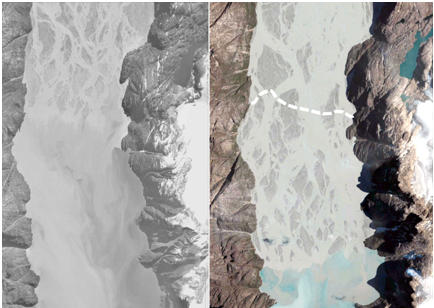Post-doc Mette Bendixen from CENPERM publishes article in Nature about the link between global warming and growing deltas on Greenland
Today, a group of researchers from the Centre for Permafrost (CENPERM) from the University of Copenhagen publish in an article in Nature about the growth of deltas in Greenland.
Professor and head of center Bo Elberling from the Institute of Geosciences and Natural Resource Management states, that: “The first author of the article, Mette Bendixen, is quite the trendsetter in her work with Google Earth on documenting notable changes in the arctic landscape.”
The work is essential for Bendixen’s recently finished PhD project at CENPERM and has been carried out in close collaboration with Lars Lønsmann Iversen, who has been responsible for the statistical computing.
Read about the work in Politiken (only available in Danish)
Post-doc Mette Bendixen from Centre for Permafrost (CENPERM) and Lars L. Iversen from the Freshwater Biological Laboratory show how climate change is affecting the Arctic landscape, causing the Greenlandic deltas to grow. Deltas are important eco systems for both agriculture and fishing, but most of the deltas in the world are drowning due to a rise in the global sea level.
The researchers from the University of Copenhagen have collaborated with a team of Danish, American and Greenlandic researchers. “We examined 121 deltas by looking at historical aerial photos taken by the American army during the Second World War. We compared these with modern satellite photos. In this way, we have been able to track changes in the Greenland deltas and see what has happened over the last 75 years,” explains Postdoc Mette Bendixen.

